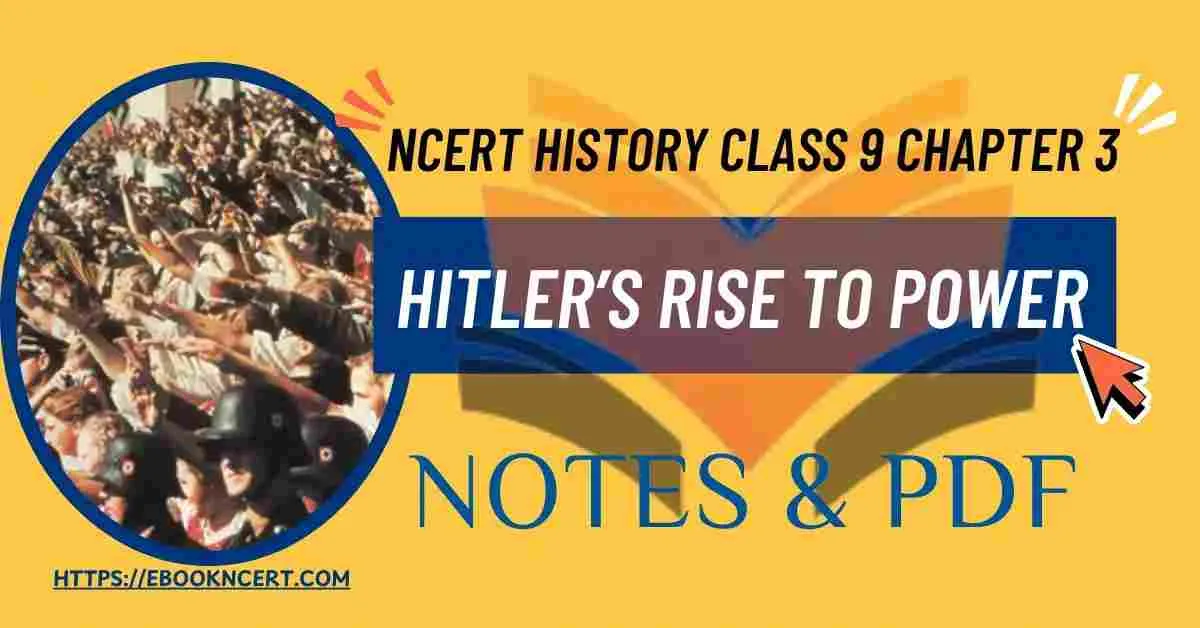Hitler’s Rise to Power – Concept & Notes PDF
Topic & sub-topics covered: Hitler’s Rise to Power and MCQs Questions: Nazism and the Rise of Hitler (All single detail notes are exam-oriented).
We have discussed in-depth and exam-oriented pointers that can be asked in the board exam of class 9th about the “Hitler’s Rise to Power” from the NCERT History notes for class 9th chapter 3rd “Nazism and the Rise of Hitler“.
Download the NCERT History for Class 9th Chapter 3 Nazism and the Rise of Hitler Notes PDF
NCERT History for Class 9th Chapter 3_ Nazism and the Rise of Hitler Notes & MCQ’s Question-Answer
Have you ever wondered how a failed artist like Hitler ended up becoming the dictator of all Germany? Class 9 NCERT History Chapter 3 “Nazism and the Rise of Hitler” tells exactly that story. When I first read it, I was honestly shocked by how bad things got in Germany after the Treaty of Versailles – crushing debt, unemployment, and hopelessness everywhere. Imagine the 1930s: people struggling to survive, feeling betrayed and angry… and then comes one man who turns all that frustration to his advantage. These notes capture the key events, from Nazi propaganda to the persecution of Jews, in a way that’s quick to revise but still gives you the “feel” of that time.
Download the NCERT History Class 9 Chapter 3 Nazism and the Rise of Hitler Notes PDF to make your exam preparation clear and effective. These notes explain the historical background of Germany after World War I, the rise of Adolf Hitler, and the impact of Nazi ideology on society and politics. Download now and strengthen your understanding of one of the most significant and impactful chapters in modern world history for Class 9.
Hitler’s Rise to Power
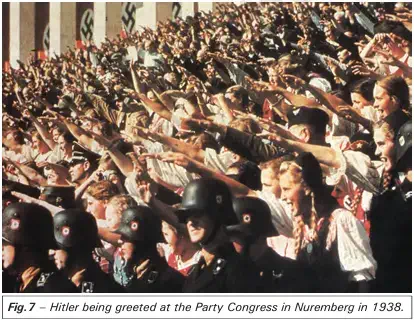
1. Background to Hitler’s Rise:
- Economic, political, and social crisis created a fertile ground for Hitler’s rise.
- Born: 1889, Austria.
- Early life: Spent youth in poverty.
2. Role in the First World War:
- Enrolled in the German army at the outbreak of WWI.
- Worked as a messenger at the front.
- Rose to the rank of corporal.
- Won medals for bravery.
- German defeat and the Versailles Treaty deeply angered him.
3. Formation of the Nazi Party:
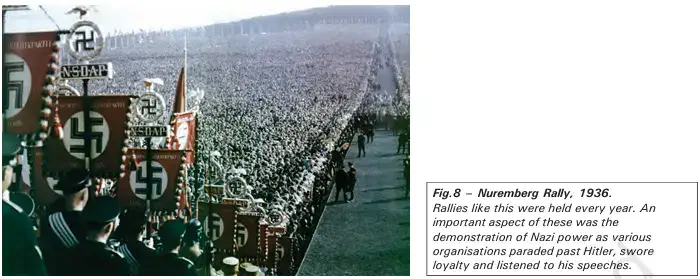
- 1919: Joined the German Workers’ Party.
- Took over and renamed it National Socialist German Workers’ Party (Nazi Party).
4. Failed Attempt to Seize Power (1923):
- Planned to take over Bavaria and then march to Berlin.
- Failed, arrested, and tried for treason.
- Released later.
5. Nazi Party Growth During the Great Depression:
- Nazis had little support until the early 1930s.
- 1928: Only 2.6% votes in Reichstag.
- 1929: Great Depression – banks collapsed, businesses shut, unemployment rose, middle class faced destitution.
- Nazi propaganda gave people hope for a better future.
- 1932: Nazi Party became largest party with 37% votes.
6. Hitler’s Charisma and Promises:
- Known as a powerful and passionate speaker.
- Promises included:
a. Build a strong nation.
b. Undo Versailles Treaty.
c. Restore German dignity.
d. Provide jobs and a secure future for youth.
e. Remove foreign influences and resist foreign conspiracies.
7. New Style of Nazi Politics:
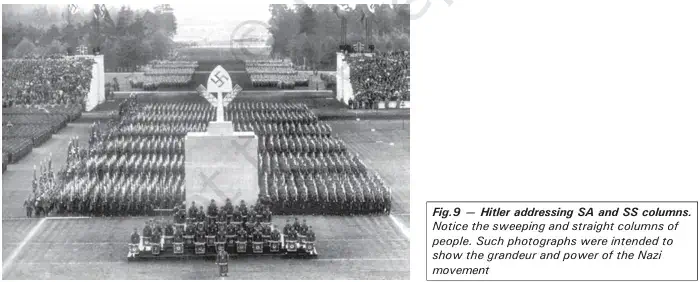
- Emphasis on rituals and spectacle to mobilise masses.
- Features:
a. Massive rallies and public meetings.
b. Red banners with Swastika.
c. Nazi salute.
d. Ritualised applause after speeches.
e. Created unity and discipline among supporters.
8. Hitler as a ‘Messiah’:
- Nazi propaganda portrayed Hitler as a saviour.
- Seen as the one who would rescue Germans from distress.
- Appeal was strongest among those whose pride and dignity had been shattered during economic and political crises.
The Destruction of Democracy
1. Hitler Becomes Chancellor:
- 30 January 1933: President Hindenburg offered the Chancellorship (highest cabinet post) to Hitler.
- Nazis had rallied conservatives to their cause.
2. Dismantling Democracy:
- Hitler began dismantling democratic structures after gaining power.
- February 1933: A mysterious fire broke out in the German Parliament (Reichstag).
- Fire Decree (28 February 1933):
a. Indefinitely suspended civic rights such as:
i. Freedom of speech
ii. Freedom of press
iii. Freedom of assembly
b. Rights were earlier guaranteed by the Weimar Constitution.
3. Repression of Communists:
- Communists were targeted as Hitler’s main enemies.
- Many were sent to newly established concentration camps.
- Example: In Düsseldorf (population 5 lakh), out of 6,808 arrest files, 1,440 were Communists.
- Communists were only 1 out of 52 types of victims persecuted by Nazis.
4. The Enabling Act (3 March 1933):
- Legal foundation for dictatorship in Germany.
- Gave Hitler power to:
a. Sideline Parliament.
b. Rule by decree. - Political changes:
a. All political parties banned except Nazi Party and its affiliates.
b. All trade unions banned. - State took complete control over:
a. Economy
b. Media
c. Army
d. Judiciary
5. Creation of Special Forces:
- Aimed to control and order society according to Nazi ideology.
- Existing forces:
a. Regular police (green uniform)
b. SA (Storm Troopers) - New forces:
a. Gestapo – secret state police.
b. SS (Protection Squads).
c. Criminal Police.
d. Security Service (SD).
6. Nazi State as a ‘Dreaded Criminal State’:
- Extra-constitutional powers allowed extreme repression.
- Powers of these forces:
a. Detain in Gestapo torture chambers.
b. Send to concentration camps.
c. Deport or arrest without legal procedures. - Police forces ruled with impunity (without fear of punishment).
Reconstruction
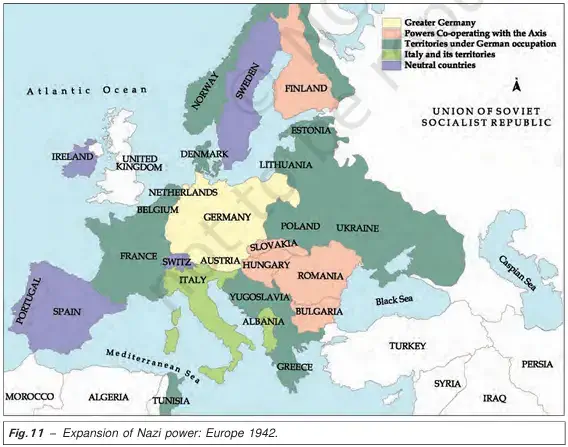
1. Economic Recovery under Hitler:
- Responsibility given to Hjalmar Schacht (economist).
- Aim: Full production and full employment through a state-funded work-creation programme.
- Achievements:
a. Construction of German superhighways (Autobahns).
b. Production of the Volkswagen (People’s Car).
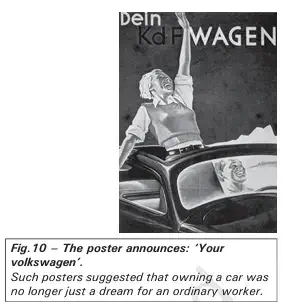
2. Quick Foreign Policy Successes:
- 1933 – Germany withdrew from the League of Nations.
- 1936 – Reoccupied the Rhineland.
- 1938 – Annexed Austria into Germany (Anschluss) under slogan: One People, One Empire, One Leader.
- Took Sudetenland from Czechoslovakia, then occupied the whole country.
- England’s unspoken support – thought Versailles Treaty was too harsh.
- These moves restored national pride and reversed Germany’s earlier humiliation.
3. Shift to Rearmament and War Preparation:
- Schacht warned against huge rearmament due to deficit financing.
- Schacht removed – cautious people had no place in Nazi Germany.
- Hitler saw war as a solution to economic crisis.
- Goal: Expand territory to secure resources.
4. Start of Second World War:
- September 1939 – Germany invaded Poland – war with France & England began.
- September 1940 – Tripartite Pact between Germany, Italy, Japan – strengthened Hitler’s international position.
- Puppet regimes installed across much of Europe.
- End of 1940 – Hitler at peak of power.
5. Invasion of the Soviet Union (Historic Blunder):
- June 1941 – Hitler attacked the Soviet Union to secure food supplies and living space (Lebensraum).
- Consequences:
a. Exposed western front to British bombing.
b. Exposed eastern front to Soviet armies. - Battle of Stalingrad – Crushing Soviet victory.
- Soviet Red Army pushed Germans back to Berlin – Soviet control over Eastern Europe for 50 years.
6. US Entry into the War:
- USA initially avoided involvement due to economic fears (like after WWI).
- Japan’s expansion:
a. Occupied French Indo-China.
b. Planned attacks on US Pacific bases. - Japan joined Hitler’s side and bombed Pearl Harbor – USA entered war.
7. End of the Second World War:
- May 1945 – Germany defeated; Hitler’s downfall.
- August 1945 – US dropped atomic bombs on Hiroshima (Japan).
New words:
- Propaganda – Specific type of message directly aimed at influencing the opinion of people (through the use of posters, films, speeches, etc.)
- Concentration camp – A camp where people were isolated and detained without due process of law. Typically, it was surrounded by electrified barbed wire fences.
Next & Previous Topics of NCERT/CBSE History Class 9 Chapter 3: Nazism and the Rise of Hitler
| Topics No. | Topics Name |
|---|---|
| 1 | Birth of the Weimar Republic |
| 2 | Hitler’s Rise to Power |
| 3 | The Nazi Worldview |
| 4 | Youth in Nazi Germany |
| 5 | Ordinary People and the Crimes Against Humanity |
MCQs on NCERT History Class 9 Chapter 3 Topic – Hitler’s Rise to Power
Here are the top exam-oriented MCQ-type questions on “Hitler’s Rise to Power” that you should prepare for your CBSE or state board exams:
Question 1. In which year was Adolf Hitler born?
a) 1885 – Born in Austria
b) 1889 – Born in Austria
c) 1892 – Born in Germany
d) 1895 – Born in Austria
Answer: b) 1889 – Born in Austria
Question 2. What role did Hitler serve in during the First World War?
a) Nurse in the army
b) Corporal and messenger in the front
c) Military strategist in Berlin
d) Pilot in the air force
Answer: b) Corporal and messenger in the front
Question 3. Which treaty’s terms deeply angered Hitler after Germany’s defeat in WWI?
a) Treaty of Trianon
b) Treaty of Versailles
c) Treaty of Sevres
d) Treaty of Brest-Litovsk
Answer: b) Treaty of Versailles
Question 4. What was the original name of the Nazi Party?
a) German National Party
b) German Workers’ Party
c) Socialist German Party
d) People’s German Workers’ Party
Answer: b) German Workers’ Party
Question 5. When did Hitler attempt to seize control of Bavaria and march to Berlin?
a) 1919
b) 1920
c) 1923
d) 1928
Answer: c) 1923
Question 6. What percentage of votes did the Nazi Party secure in the Reichstag in 1928?
a) 2.6%
b) 15%
c) 25%
d) 37%
Answer: a) 2.6%
Question 7. By 1932, what percentage of votes did the Nazi Party gain in the Reichstag?
a) 15%
b) 25%
c) 32%
d) 37%
Answer: d) 37%
Question 8. What was the highest position in the German cabinet offered to Hitler in January 1933?
a) President
b) Chancellor
c) Prime Minister
d) Defence Minister
Answer: b) Chancellor
Question 9. Which event in February 1933 allowed Hitler to suspend civic rights?
a) Enabling Act
b) Fire in the German Parliament
c) Versailles Treaty
d) Storm Troopers’ March
Answer: b) Fire in the German Parliament
Question 10. What did the Fire Decree of 28 February 1933 suspend?
a) Voting rights only
b) Freedom of speech, press, and assembly
c) Military rights only
d) Land ownership rights
Answer: b) Freedom of speech, press, and assembly
Question 11. Which Act established dictatorship in Germany in March 1933?
a) Reichstag Decree
b) Enabling Act
c) Nazi Consolidation Act
d) Berlin Emergency Act
Answer: b) Enabling Act
Question 12. Who was appointed by Hitler to handle economic recovery?
a) Joseph Goebbels
b) Hjalmar Schacht
c) Hermann Göring
d) Heinrich Himmler
Answer: b) Hjalmar Schacht
Question 13. Which famous German car was produced during Nazi economic recovery programmes?
a) Mercedes Benz
b) Volkswagen
c) Porsche
d) BMW
Answer: b) Volkswagen
Question 14. In which year did Germany reoccupy the Rhineland?
a) 1933
b) 1936
c) 1938
d) 1939
Answer: b) 1936
Question 15. What slogan was used for the unification of Austria and Germany?
a) One nation, one people, one destiny
b) One people, one empire, one leader
c) One state, one power, one destiny
d) One land, one race, one flag
Answer: b) One people, one empire, one leader
Question 16. Which country’s invasion by Germany in 1939 started WWII?
a) Austria
b) Poland
c) France
d) Belgium
Answer: b) Poland
Question 17. Which pact was signed in September 1940 between Germany, Italy, and Japan?
a) Anti-Comintern Pact
b) Tripartite Pact
c) Axis Alliance Pact
d) Berlin Agreement
Answer: b) Tripartite Pact
Question 18. In which year did Germany attack the Soviet Union?
a) 1939
b) 1940
c) 1941
d) 1942
Answer: c) 1941
Question 19. Which battle marked a crushing defeat for Germany by the Soviet Red Army?
a) Battle of Berlin
b) Battle of Moscow
c) Battle of Stalingrad
d) Battle of Leningrad
Answer: c) Battle of Stalingrad
Question 20. Which event brought the USA into WWII?
a) German invasion of Poland
b) Attack on Pearl Harbor by Japan
c) Bombing of London
d) Invasion of France
Answer: b) Attack on Pearl Harbor by Japan
Question 21. In which month and year did WWII end in Europe with Hitler’s defeat?
a) April 1945
b) May 1945
c) June 1945
d) August 1945
Answer: b) May 1945

